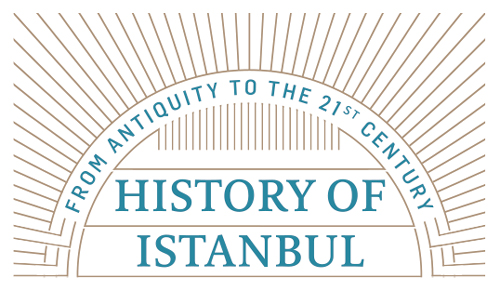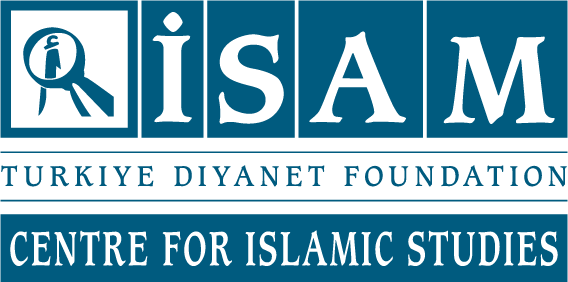This section is an attempt to read the long history of Istanbul comparatively and is based on two simple questions. First, isn’t it necessary to determine what has historically been most significant for cities if Istanbul’s importance throughout history is to be determined? In other words, what was considered important for cities, and what did they want to possess, in the 6th, 16th, or 20th century? Second, is it accurate to determine the importance of a city in a certain period by relating it to and comparing it with other cities? The answers to these questions will give significant clues to Istanbul’s location both within its own context and in the context of world cities and history. This comparative reading will be done with three chapters that address Istanbul’s Roman-Byzantine, Ottoman, and post-Tanzimat/Republican periods.
In the first chapter, which relates how Byzantine Istanbul became a global city, the following is stated: “In the beginning, Constantinople was a place bigger than a town that was, by chance, considered as one of the two capitals and was overrated. However, it became a real global city within a generation.” The steps taken by Istanbul, which had been constructed as a capital like Rome, will tell us what was considered important in that period. The chapter also mentions Istanbul’s distinctive traits in comparison with other cities within this context. Istanbul undertook a new representation of Roman tradition, peace, and unity. Its assumption of the Christian protectorate and its status as a religious-institutional center, with consuls such as İznik (Nicaea) and Kadıköy (Kalkedon), its influence on the architecture and intellectual environment of other cities, its wealth of relics, and its claim to be the ecumene put Istanbul in a distinctive place. Its large population, and its position as the entry and exit point for wealth and luxury items and the terminus of long commercial routes were other distinctive traits. In short, Istanbul was able to overshadow ancient cities such as Rome, Jerusalem, Antioch, Alexandria, Thessaloniki, and Ephesus as a city where all the culture and wealth of its period were reflected in its architecture, institutions, intellectual environment, images, financial capacity, and busy daily life. Comparisons to Byzantine Istanbul in later centuries, some cities of the Han Dynasty in China, and Muslim Baghdad and Damascus are also made in the chapter.
The second chapter describes the city’s destruction in the 13th century Latin invasion and how it lost its opportunity to grow after being surrounded by the Ottoman state but started expanding and flourishing again after 1453, and discusses the position of Ottoman Istanbul on the scale of world cities. It states that the city gained a new identity based on Islamic belief, culture, and institutional mechanisms (such as the caliphate, houses of worship, foundations, and relics) and Turkish-Persian traditions, as well as the respect paid to the city’s Roman-Byzantine heritage during that period. It also emphasizes that there was a strong mutual relationship between the horizon and power of the political unity to which Istanbul belonged, the size of the population, and the city’s influence. Istanbul is compared both to Ottoman cities like Bursa, Edirne, Sofya, Thessaloniki, Aleppo, Damascus, Cairo, and Baghdad and to world cities like Venice, Vienna, Isfahan, Agra, Beijing, St. Petersburg, Lisbon, Amsterdam, London, and Paris in terms of its geopolitical location, topography and settlement order, population, ethnic and religious structure, and architectural and aesthetic richness. While Istanbul was considered one of the most outstanding cities of the world in terms of image, political and cultural influence, population, commercial and intellectual networks, security, wealth, peace, and tranquility until the 18th century, it is believed to have lagged behind European cities after that due to the opening of new trade routes and advances in science and industry.
The third chapter examines the position of Istanbul as it started modernizing in the Ottoman period and Republic Istanbul in the world, the period which includes the 20th century starts from imperial Istanbul, which began new urbanization and administrative efforts after the Tanzimat reforms and has continued until the present day. Today’s Istanbul is experiencing a process in which discourses on the nation-state, Cold War, and globalization are prevalent. Istanbul’s position also changed in the 20th century, which had different definitions and classifications for cities than the pre-modern period did. After 1,600 years as a political capital, it no longer has that status. Rather, it is a national metropolis and the capital of education, culture, commerce, and finance. During this period, Istanbul has been surrounded by world cities developed by industrialization, capitalization, and modernization and has played a more national role. Historically, this period resembles the periods when it did not have the chance to expand as it was surrounded by more powerful entities—Rome in the 4th and 5th centuries, Islamic states in the 7th and 8th centuries, and the Latins and Ottomans in the 13th, 14th, and 15th centuries.
The trends and issues of this period (such as migration, squatting, urban transformation, technology, and new means of transportation and communication) are described, and Istanbul’s adaptation to these processes and its unique development as a historical city are analyzed in this chapter. According to the chapter, “the formation of urban administrations and local institutions made a detailed census, the emergence of new bureaucratic structures to implement public health policies, and the start of modern municipal activities” possible at the beginning of this period. Istanbul’s development continued in the following years with the formation of bureaucratic institutions, the search for architectural order, and the definition of local administrative mechanisms. This process is explained comparatively with examples from Ankara and Izmir in Turkey as well as Manchester, Chicago, London, Detroit, Paris, and New York. It is analyzed with consideration of global developments in three time frames: before 1950, between 1950 and 1980, and after 1980. It concludes that Istanbul followed an urbanization process that did not begin successfully but gained importance over time, maintained its place among the cities of Turkey, and resumed increasing importance as a world city in the last century. According to this chapter, Istanbul had 18% of Turkey’s population in 2012 (compared to 5% in 1927), 14% of its jobs in 2000, and 45 universities with 405,000 students in 2012. This chapter demonstrates in detail that Istanbul is taking its place among world cities as a demographic, financial, and intellectual center in addition to its historical, cultural, and touristic importance.
It is hoped that the section “Istanbul on a World Scale” will be the first step in a comparative analysis of Istanbul within its historical context and on the scale of world cities, and will inspire new research on this important topic.





